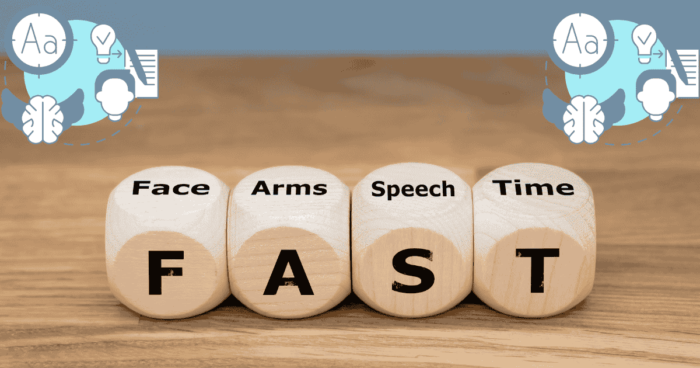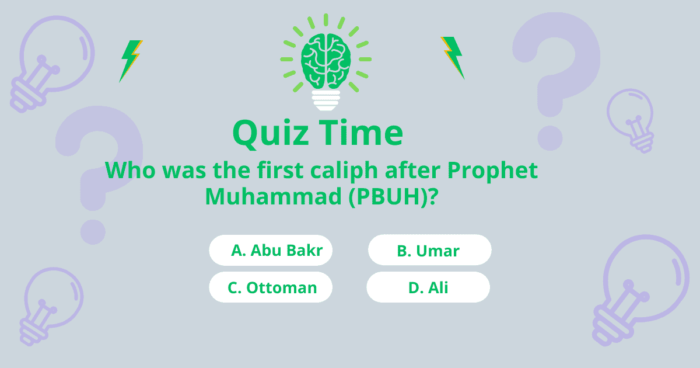One of the most common challenges faced by students and history enthusiasts alike is how to remember dates and names in history that pepper the pages of history. From significant battles to influential figures, these details are the threads that weave the rich tapestry of our past.
This article aims to offer practical methods and techniques on how to remember dates and names in history more efficiently, using examples from Islamic history.
The Importance of Remembering Historical Dates and Names
Recalling historical events accurately is more than a test of memory; it is a way to connect with the past, understand the present, and prepare for the future. Remembering Historical dates and names helps us place events in a timeline, providing context and helping us understand the progression of history.

- Historical Context: Learning how to remember history facts can significantly enhance one’s grasp of both ancient and modern events. Dates and names are fundamental to the study of history. They allow us to map out the sequence of events and understand the cause-and-effect relationships that have shaped the world. In Islamic history, for instance, remembering the date of the Battle of Badr (624 CE) is crucial to understanding its significance in the early Muslim community’s consolidation of power.
- Academic and Practical Benefits: For students, educators, and history enthusiasts, retaining historical information accurately can enhance learning, teaching, and discussion. It enables a deeper engagement with the material and fosters a greater appreciation for the complexities and lessons of history. Learning how to remember names and dates in history is an essential skill that aids in academic success and historical comprehension.
Understanding the Basics of Memory
By understanding the basics of memory, you can develop effective memorization techniques that help in memorizing dates in history.

Memory is generally divided into two main types: short-term and long-term memory.
- Short-term memory holds information temporarily, like a scratchpad, where data is stored briefly before being discarded or moved to long-term memory.
- Long-term memory is where information is stored more permanently. When we remember a historical date or name, it is usually because it has been encoded into our long-term memory through processes like repetition and association. For example, remembering the year of the Prophet Muhammad’s (PBUH) migration to Medina, 622 CE, involves encoding this date into our long-term memory.
To effectively remember historical dates and names, it’s crucial to focus on strategies that facilitate the transfer of information from short-term to long-term memory. These strategies include repetition, association, and contextual understanding.
Techniques for Remembering Dates in History
1. Timelines and Chronological Order
- Creating Visual Timelines: Creating visual timelines is one of the best ways to remember historical dates and events in history. They provide a clear, chronological sequence of events, making it easier to place dates in context. For example, creating a timeline that highlights key events in early Islamic history, such as the Hijra (622 CE), the Battle of Badr (624 CE), and the Treaty of Hudaibiya (628 CE), allows you to see how these events are connected and how they fit into the broader historical narrative.
- Grouping Events by Century or Decade: Organizing historical events into broader periods, such as centuries or decades, is a practical approach to memorizing historical dates. By grouping events, you can create a mental framework for when things happened. For example, placing the major events of the Umayyad Caliphate in the 7th and early 8th centuries (661–750 CE) helps contextualize the timeline of their rule and key occurrences within that era.

2. Significant Events and Their Impact
- Relating Dates to Major Historical Events: Linking a date to major historical events is a key method in how to remember dates of history. For example, the year 1492 is often remembered in the context of Christopher Columbus’s voyage, but in Islamic history, it marks the fall of Granada and the end of Muslim rule in Spain, a key historical event that had a profound impact on the Muslim world.
- Understanding the Context and Consequences: Grasping the significance of events makes the associated dates more memorable. When you understand the causes and effects of an event, the date becomes more than just a number—it becomes a point in a story. For instance, knowing the significance of the Hijra (migration) of the Prophet Muhammad (PBUH) in 622 CE, which led to the establishment of the first Muslim community in Medina, helps solidify this date in memory.
3. Using Mathematics
Using Mathematical calculations and relationships is another technique for those wondering how to remember history dates. For instance, the date of the Battle of Badr (624 CE) is just four years before the Treaty of Hudaibiya (628 CE). Recognizing such patterns and intervals between events helps recall dates by understanding their relative positions in time.
In the case of the Rashidun Caliphate, a calculation can help organize the timeline of the four caliphs who ruled for thirty years. By dividing these thirty years into periods of each caliph’s rule, we can break it down as follows:
- Abu Bakr ruled for two years from 11 AH to 13 AH (632 CE-634 CE)
- Umar for ten years from 13 AH to 23 AH (634 CE-644 CE)
- Uthman for 12 years from 23 AH to 35 AH (644 CE-656 CE)
- Ali for six years from 35 AH to 40 AH (656 CE-661 CE)
This sums up to 2 + 10 + 12 + 6 = 30 years.
Using this method, you can remember key dates such as the Prophet Muhammad’s (PBUH) death in 13 AH, the succession or nomination of each caliph, their dates of death, the beginning of Muawiya’s caliphate, and the start of the Umayyad dynasty.
Techniques for Remembering Names in History
1. Phonetic Associations
Phonetic associations can assist in how to remember names in history, making them easier to recall.
- Sound Similarities: Using rhymes or musical mnemonics can make remembering names easier. For example, the name “Harun al-Rashid, Amin ar-Rashid, and Mamun al-Rashid”, the famous Abbasid Caliphs, can be remembered through a catchy rhyme or a musical tune. Similar to how “In fourteen hundred ninety-two, Columbus sailed the ocean blue” helps recall Columbus’s voyage, creating a rhyme for Harun al-Rashid can make his name more memorable.
- Linking Names to Familiar Words or People: Associating a historical figure’s name with something familiar can aid retention. It is an effective trick for anyone seeking tips on how to remember names in history. For example, the name “Salah ad-Din” (Saladin) can be linked to the familiar word “salah” (prayer) to create a memorable association. Visualizing Saladin as a leader who fought for the recapture of Jerusalem while thinking of the word “salad” can help solidify his name in your memory.

2. Storytelling and Contextual Learning
- Creating Stories or Contexts Around Historical Figures: Crafting a story or context around a name can make it easier to remember. For example, consider the figure of “Ibn Sina” (Avicenna), a prominent Persian physician. Creating a narrative highlighting his contributions to medicine and philosophy, such as his famous work “The Canon of Medicine,” can provide a memorable context. Imagining a story where Ibn Sina is a wise physician who uses his knowledge to heal patients in medieval Persia can help reinforce his name and achievements.
By embedding names within a narrative, you gain insight into how to remember history facts and the people behind them.
3. Flashcards and Quizzes
- Utilising Flashcards for Regular Practice and Self-Testing: Flashcards are versatile for effective memorisation techniques. Creating flashcards with names on one side and key details or achievements on the other can help with regular practice and self-testing. For example, a flashcard might have “Umar ibn al-Khattab” on one side and “Second Caliph of Islam, known for administrative reforms and justice” on the other. Regularly reviewing these cards can strengthen your recall of historical names.

- Conducting Quizzes: Testing yourself with quizzes can reinforce learning. Create quizzes with questions like “Who was the first caliph after Prophet Muhammad (PBUH)?” and answer with “Abu Bakr al-Siddiq.” Regular quizzes help reinforce the connection between names and their historical significance.

4. Alphabetical and Thematic Grouping
- Grouping Names by Alphabetical Order: Organizing names alphabetically can help create an ordered mental list. For instance, grouping figures like “Ali ibn Abi Talib,” “Aisha bint Abi Bakr,” and “Abu Hanifa” under the letter “A” helps structure the information in a way that’s easier to recall.
- Grouping by Theme: Grouping names by themes or categories can also aid in effective memorisation techniques. For example, grouping the names of important Islamic scholars such as “Ibn Rushd,” “Ibn Khaldun,” and “Ibn al-Haytham” together under the theme of “Islamic scholars” helps associate their contributions and significance, making it easier to remember them collectively.

By applying these techniques, you can enhance your ability to recall historical names and make learning about history more engaging and effective.
Tips for Long-Term Retention
- Spaced Repetition: Spaced repetition is a technique where information is reviewed at increasing intervals over time. This approach is highly effective for long-term retention. Using apps like Anki or setting a study schedule that includes periodic reviews of historical dates and names can help reinforce your memory and prevent forgetting. This method is crucial for how to remember dates and names in history over the long term.
- Teaching Others: Teaching or explaining historical information to others is one of the most effective ways to reinforce your knowledge. Explaining concepts, dates, and names to a friend or study group solidifies your understanding and recall. For example, discussing the significance of the Charter of Madina (622 CE) with others helps you to remember its details and implications better.

- Educational Apps and Games: Educational apps and games can make it easier to remember historical past events and more engaging. Apps like Historypin or Kahoot! offer interactive experiences where users can test their knowledge through quizzes and games. For instance, a game might simulate historical events, allowing you to interact with and learn about significant dates and figures in a fun and immersive way. Such tools often use gamification to enhance memory retention by turning learning into an interactive challenge. Remember historical past events.
- Connecting History to Personal Interests: Linking historical information to your personal interests can make learning more engaging and memorable. If you have a passion for art, explore the contributions of Islamic artists and architects, like those behind the Alhambra or the Dome of the Rock. By associating historical facts with your interests, you create a more meaningful and relatable learning experience, aiding retention.

- Maintaining Curiosity and Engagement: Keeping curiosity and engagement high is essential for long-term retention. Stay updated on historical discoveries and scholarly debates related to Islamic history. Attend lectures, join history-related forums, or participate in historical reenactments or discussions. Engaging with history through diverse and stimulating methods helps maintain your interest and makes learning more enjoyable.
Conclusion
Mastering the art of remembering historical dates and names enhances our understanding of the past and enriches our appreciation of historical events. By employing techniques such as visual timelines, phonetic associations, and active recall, you can improve your memory and engage more deeply with history. Regular practice, curiosity, and connecting history to your personal interests further support long-term retention.
Incorporating these techniques into your study routine will help you master how to remember dates and names in history. These can make the process of learning history more engaging and rewarding. As you practice and refine these techniques, you will find that your ability to remember and appreciate the intricate details of history will grow, enriching your knowledge and understanding of the past.
Further Reading and Resources
- Suggested Books:
- “The Art of Memory” by Frances A. Yates
- “Moonwalking with Einstein: The Art and Science of Remembering Everything” by Joshua Foer.
- Online Resources:
- Anki (for spaced repetition flashcards)
- Quizlet (for interactive quizzes and flashcards)
- Tiki-Toki and TimelineJS (for creating digital timelines)

1 thought on “How to Remember Dates and Names in History: Tips and Techniques”